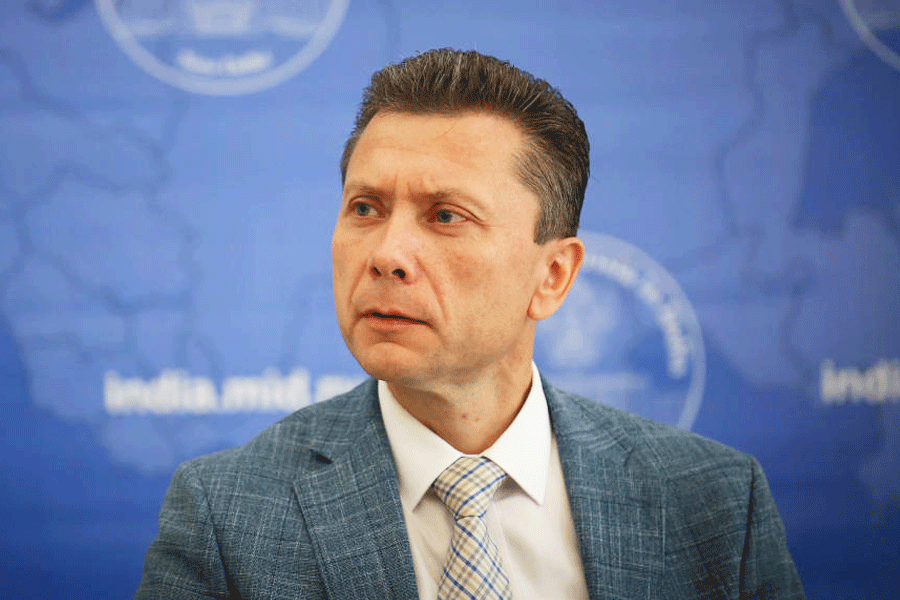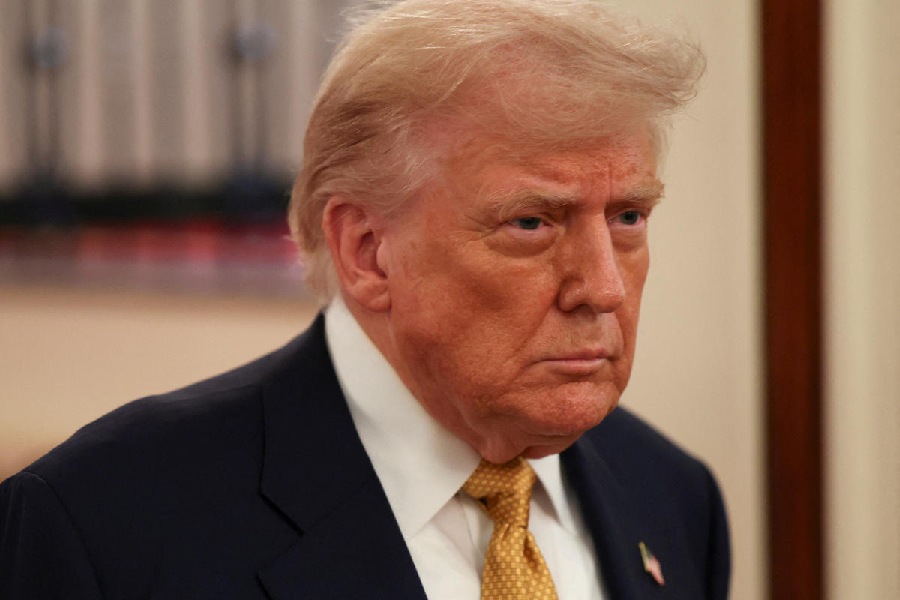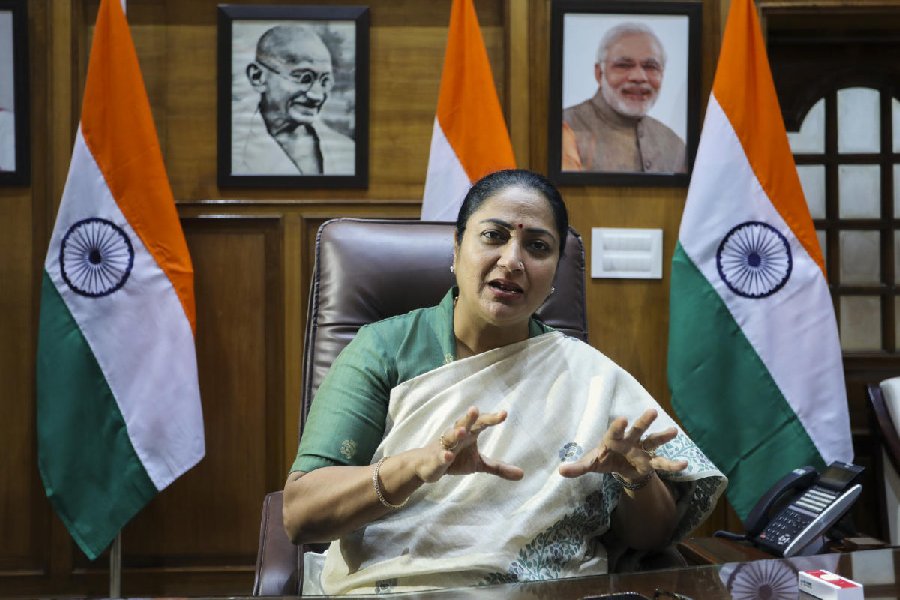 |
Jawaharlal Nehru: Civilizing a Savage World By Nayantara Sahgal, Viking, Rs 350
What “grieved” Mahatma Gandhi most about Motilal Nehru’s “return to wine drinking” was that he should do so “publicly”. Jawaharlal Nehru scolded Kwame Nkrumah because his portrait appeared on Ghanaian stamps. John Foster Dulles prayed all night for guidance on the Japanese peace treaty and was convinced “the Lord himself ha[d] blessed America’s stand”.
There should be many more such nuggets in what Nayantara Sahgal calls her “extended essay”. As is only to be expected from the author of Prison and Chocolate Cake, it makes very pleasant reading. But, sadly, the author sacrifices the advantages of her ringside seat in the great global theatre to give readers a rapid tour of world affairs whose single focus, the “civilizing” genius of the title, recalls Dean Acheson’s caustic comment that Nehru was so important that “if he did not exist — as Voltaire said of God — he would have to be invented”. This is not to join in today’s fashionable Nehru-bashing. No student of recent history will deny Sahgal’s claim that Nehru struggled “to establish scientific progress, participatory democracy and secularism as permanent fixtures”. But did he succeed? If not, why not? Was Nehru’s temperament not in consonance with the temper of the Indian masses? Or was it all the fault of “succeeding governments”, which is probably Sahgal’s shorthand for reaffirming that blood is not thicker than water? Not only does this demonstration of “family” (more of that later) loyalty come rather late in the day but it also meanders lyrically over well-trodden ground.
Though Sahgal had privileged access to source material and must herself nurse a treasure-house of memories, this recapitulation of modern history relies mainly on secondary and tertiary sources. Her narrative would have been more credible if she admitted that even gods occasionally disclose feet of clay. The bland statement, “In 1957, China announced the opening of the Sinkiang-Tibet highway”, glosses over the government’s failure and secretiveness over Aksai Chin until the press forced it to come clean. Nowhere are we told that India fatally confused “suzerainty” with “sovereignty” in acknowledging China’s rights over Tibet. The corruption that began under Nehru (remember Dharma Teja and his Jayanti Shipping?) is not mentioned. The passage on Purushottam Das Tandon is incomplete without the admission that Nehru used a clever sleight of hand to get rid of the elected party chief. Many believe that the conquest of Goa, hailed as an act of liberation, was not unconnected with Krishna Menon’s election from Bombay only a few weeks later.
One last instance. Sahgal reproduces a letter from an East Bengal refugee who, signing himself “A Nathuram Godse”, vowed to kill Nehru. “You will leave this world with me — you for indulging in idealism and me for murdering a foolish coward anaemic and misleading leader.” The writer was incensed by the Nehru-Liaquat Ali Pact of 1950. So were — are — many others without being “Hindu revivalists”. Sahgal says nothing about the contents of the pact, which upheld the symbolic right of East Bengal Hindus to property that the Pakistani authorities had seized, thereby also depriving them of any right to the handsome compensation lavished on refugees from West Punjab. This ploy to buy peace by sacrificing the innocent was responsible for widespread misery and placed a tremendous strain on West Bengal’s resources.
Two novel theories bear examination. Sahgal may have a point when she argues that China’s intervention in Tibet would not have been so brutal if the American Central Intelligence Agency had not already been stirring up the Tibetans. But it’s difficult to accept her picture of how the CIA action turned a benign Mao Zedong into a monster. It’s even more difficult to believe that India was an innocent and ignorant spectator since the CIA did at least some of its recruiting in India, even in Calcutta. After training in the US, some agents were airdropped into Tibet from Mustang in Nepal. Secondly, it is somewhat far-fetched to argue that, thanks to “the umbilical cord binding superpower rivalry”, the Anglo-French-Israeli attack on Egypt during the Suez crisis “entrenched the Stalinists and sidelined the tide of liberalism in the Soviet Union”. In short, Anthony Eden was responsible for the Soviets reoccupying Hungary and killing Imre Nagy. A more discriminating defence of Nehru’s role in laying the foundations of India’s modernization would have been more effective.
As is to be expected of the author of nine novels, Sahgal is better at social satire than political analysis. The delightful paragraph about “fashionable society ... embedded in the grooves of our imperial past” suggests she would have been a roaring success writing about changing lifestyles before, during and after the Nehru years. There are glimpses of it in the passage mentioned above, in the few lines about Ruttie Jinnah and in another paragraph about the disappearance of Elizabeth Arden and Max Factor: “Those whose skins couldn’t do without them had to buy them abroad.” Her’s is a convincing voice, then, for she is writing about the milieu she has known best throughout her life.
One last point. This is supposed to be a family story but it’s not about the author’s family at all. When Indira Gandhi took to asserting son Sanjay’s familial superiority over his wife, a columnist pointed out that Maneka’s family of civil servants and high army officers with at least one knight was hardly inferior to a Parsee family of small-time merchants. For Rajiv and Sanjay and their mother, too, after her marriage were Gandhis (whether Parsee or not is another matter) and not Kashmiri Brahmins. Mrs Gandhi sent word that she was drawing a distinction not of social class but of political culture. Be that as it may, Nayantara Pandit became Nayantara Sahgal and, possibly, Nayantara Mangat Rai. At no stage was she Nayantara Nehru. Her family was Pandit, even the wicked Uncle Pratap who froze Vijayalakshmi’s funds when her husband (his younger brother) died, giving her instead a Hindu widow’s monthly maintenance of Rs 150, was more her kith than any maternal Nehru.











